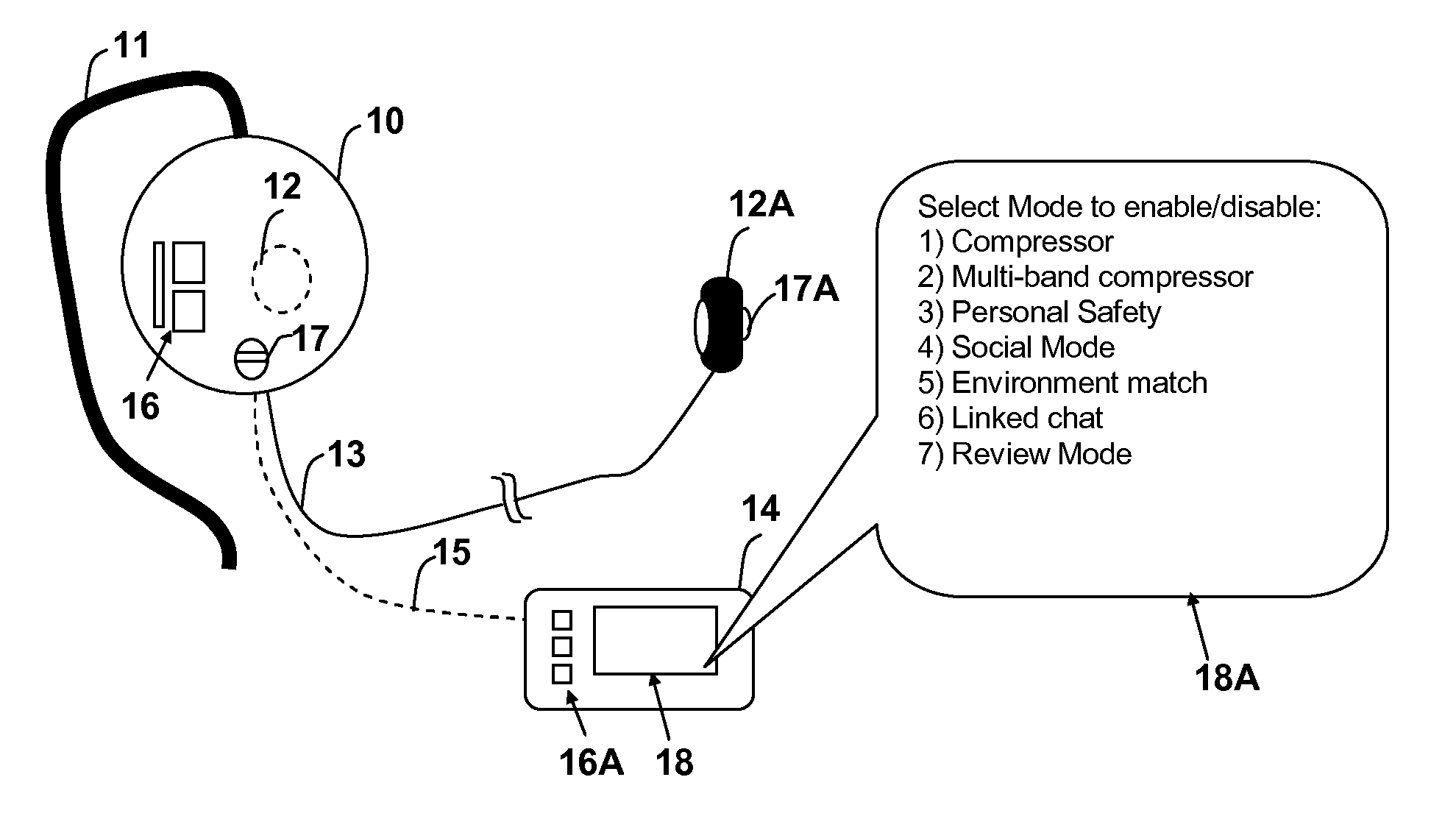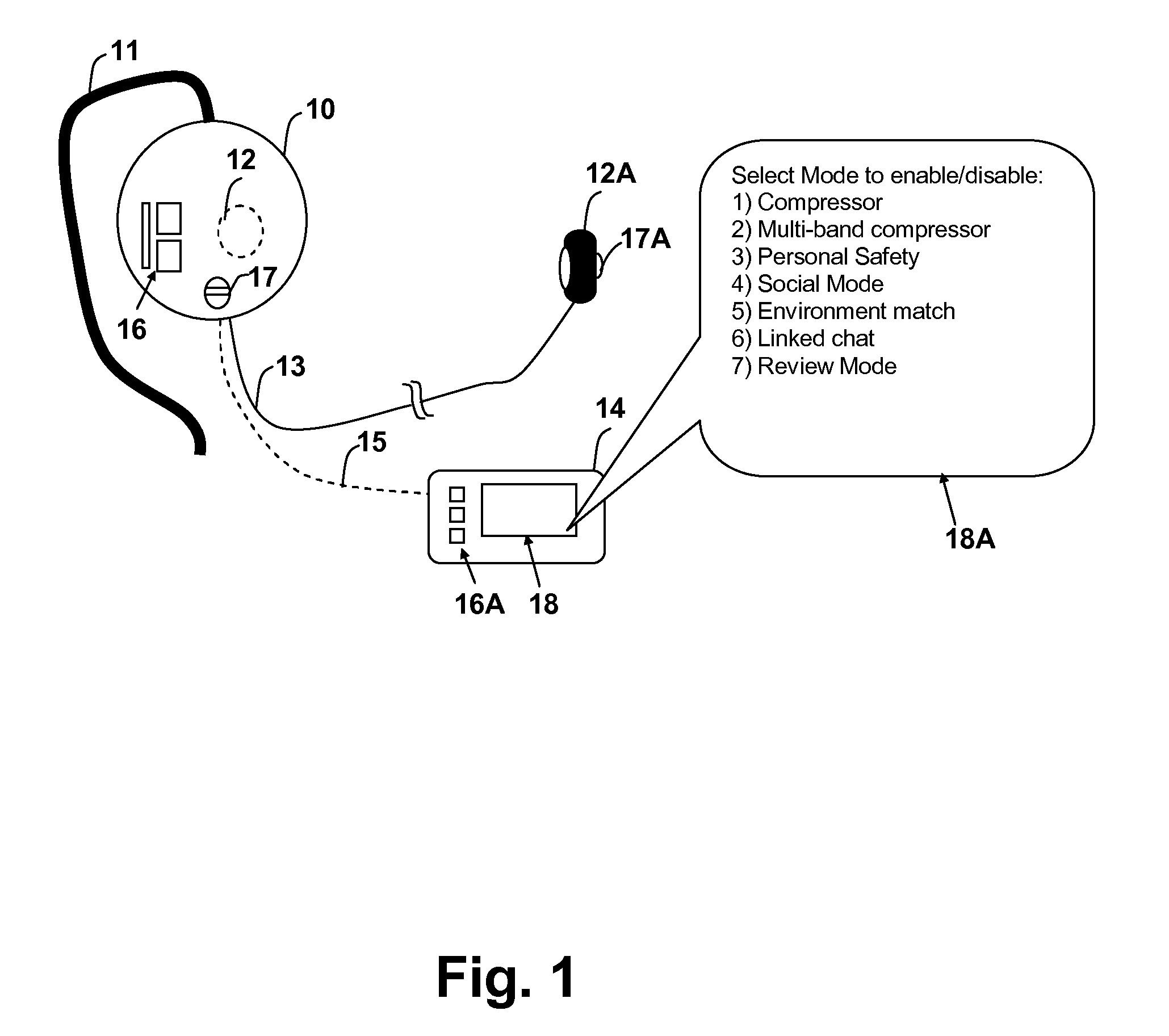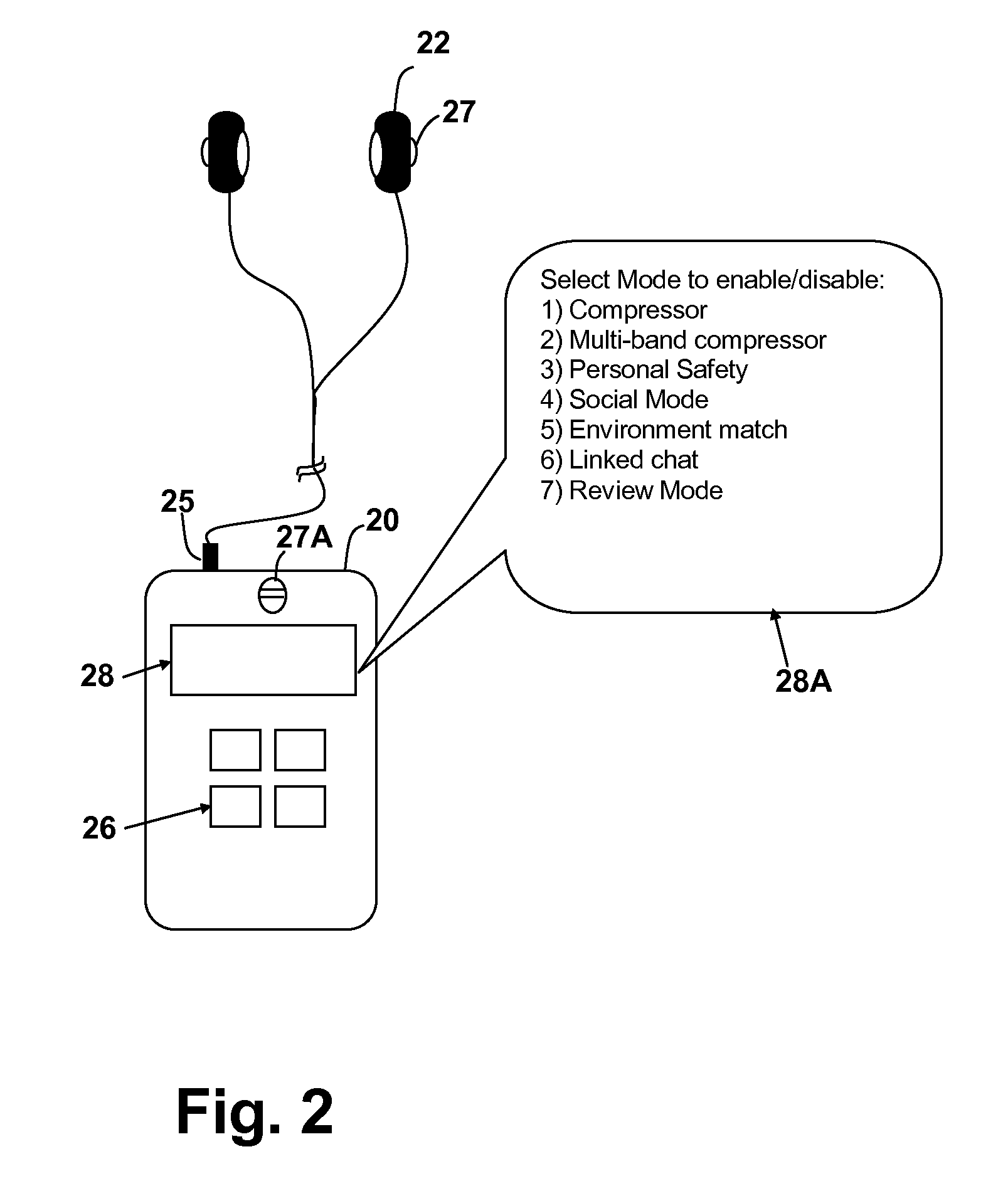Ambient audio event detection in a personal audio device headset
a technology of audio event detection and personal audio device, which is applied in the direction of speech analysis, speech recognition, instruments, etc., can solve the problems of not being able to alert pedestrians to car horns, more leaky headphone elements, and being increasingly difficult to get the attention of a personal audio device user in order to converse,
- Summary
- Abstract
- Description
- Claims
- Application Information
AI Technical Summary
Benefits of technology
Problems solved by technology
Method used
Image
Examples
Embodiment Construction
[0022]The present invention encompasses a consumer personal audio playback device that uses gain control of audio signals rendered from internally-stored program information to adapt the volume level of a headphone output to environmental sounds. The gain control is made in conformity with the output of one or more microphone elements integral to the playback device housing that sense environmental sounds and an internal processing circuit adjusts the gain of the headphone output in conformity with the output of the microphone element(s). The microphone element(s) may be the same microphone(s) used to provide recording capability when the personal device is also a recorder. The device may also include subtractive noise-cancellation as a selectable operating mode and, if so, the microphones used to provide input to the noise-cancellation process may be used to provide input to the processing circuit of the present invention. Intelligent algorithms are provided in the processing circu...
PUM
 Login to View More
Login to View More Abstract
Description
Claims
Application Information
 Login to View More
Login to View More - R&D
- Intellectual Property
- Life Sciences
- Materials
- Tech Scout
- Unparalleled Data Quality
- Higher Quality Content
- 60% Fewer Hallucinations
Browse by: Latest US Patents, China's latest patents, Technical Efficacy Thesaurus, Application Domain, Technology Topic, Popular Technical Reports.
© 2025 PatSnap. All rights reserved.Legal|Privacy policy|Modern Slavery Act Transparency Statement|Sitemap|About US| Contact US: help@patsnap.com



